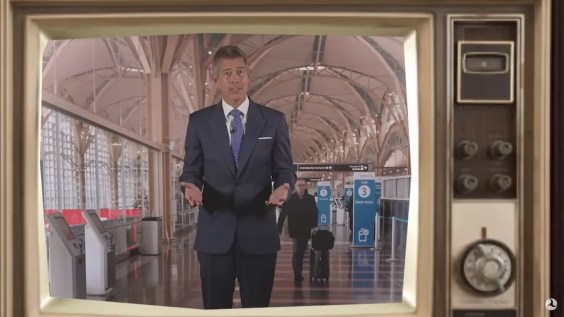A witness who was biking behind Lauren Davis at the time she was struck and killed by a turning driver on the morning of April 15 says she is "absolutely sure [Davis] was not biking against traffic."

The eyewitness account directly contradicts the version of events police have propagated since the immediate aftermath of the crash, when NYPD told several news outlets, including Streetsblog, that Davis was biking against traffic.
The discrepancy fits a pattern of police bias, in which NYPD supplies reporters with information exonerating drivers who kill pedestrians or cyclists immediately after a crash, forming the basis of most media coverage. With alarming regularity, those initial NYPD reports and press accounts are proven erroneous when witness testimony or video evidence implicating the driver surfaces later on.
No charges have been filed against the driver who killed Lauren Davis.
Rebecca Ballantine was biking north on Classon Avenue at around 8:30 a.m. that Friday after seeing her son onto a school bus. She first noticed Davis stopped at a red light facing north on Classon at the intersection of Gates Avenue, wearing a helmet. Ballantine proceeded when there was a gap in traffic, before the light turned green, she said, while Davis stayed behind.
Soon after, Davis overtook Ballantine heading north, in the direction of traffic. Davis worked at Pratt, and Classon would have taken her to the campus.
At the time the driver, a 41-year-old woman, struck Davis at Lexington Avenue, two blocks north of Gates, Ballantine says she was behind Davis but less than a block away.
Ballantine said her impression of the lead-up to the collision is not completely clear, but she saw the moment of impact. "I thought [Davis] was going [straight] on Classon as the driver made the turn," she said, describing a "left-hook" scenario in which the driver failed to yield. (NYPD told reporters that the driver turned left from Classon onto Lexington.)
One thing Ballantine is certain of is that Davis, contrary to NYPD's account, was not riding the wrong way. "I am absolutely sure she was not biking against traffic," she said. "I was very aware of her."
After the collision, Ballantine saw Davis lying on the ground on Lexington, and "the driver was slowing but had not come to a complete stop," she said. Then the driver stopped and got out of the car.
"The driver was screaming, 'She ran a light!' Which was not true," said Ballantine. "[The driver] was clearly in complete distress, she was distraught."
Davis, meanwhile, "wasn't talking coherently," said Ballantine. "She was trying to get up but she couldn't." Outwardly, she said, the injuries did not appear to be life-threatening.
Almost immediately, a black car pulled up and two men with two-way radios called in the address. Ballantine assumed they were police and left the scene to head to work.
A week after the crash, on Friday the 22nd, NYPD investigators reached Ballantine and took her statement, she said. Police told her they have video of Davis passing her, indicating that NYPD now has visual evidence that Davis was biking north on Classon, in the direction of traffic.
But as of this afternoon, NYPD's crash report still says Davis was traveling south when she was struck, and no charges have been filed against the driver. NYPD's public information office could not say how crash investigators determined Davis's direction of travel.
The most reliable information available to the public is Ballantine's first-hand account directly contradicting NYPD's report. This would hardly be the first time that NYPD jumped to conclusions and spread misinformation implying the victim of a fatal crash was at fault. To cite a few examples:
- In 2008, NYPD investigators concluded that Rasha Shamoon had run a red light on her bicycle when she was fatally struck by Abraham Soldaner, relying mainly on testimony from Soldaner and his friends. A civil suit later found Soldaner 95 percent responsible for the crash, highlighting numerous omissions in NYPD's investigation.
- Citing NYPD, the Daily News reported that 3-year-old Allison Liao was struck and killed when she "broke free from her grandmother while they were crossing the street in Queens" in October, 2013, but video later showed that the driver failed to yield while Allison held her grandmother's hand as they crossed with the walk signal.
- Just last week, NYPD issued a statement that cyclist James Gregg "collided into [the] rear tire" of a big rig on Sixth Avenue in Park Slope without mentioning that the street is not a designated truck route.
NYPD Commissioner Bill Bratton, Deputy Commissioner for Public Information Stephen Davis, and Highway Patrol commanding officer Michael Ameri need to reform how crash information is handled and disclosed to the public. The pattern of treating erroneous details and unreliable testimony as facts to be publicly broadcast harms victims and their family and friends. And by obscuring the true causes of traffic fatalities, it hinders efforts to implement effective solutions to save lives.





